The drama of Iparralde, the tragedy of the south
2001/12/01 Carton Virto, Eider - Elhuyar Zientzia Iturria: Elhuyar aldizkaria

The drama of Iparralde, the tragedy of the south
Situation of industrialized countries
In recent years, treatments against the AIDS virus have helped improve the situation of patients in industrialized countries. It increases patient life expectancy, decreases mortality and significantly decreases mother-to-child transmission. Therefore, patients have a better quality of life. They receive treatment at home and income has declined considerably.
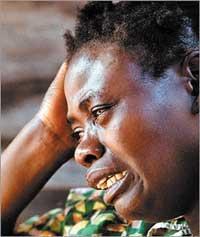
Thanks to treatments, in a few years fear has become trust, since AIDS is no longer deadly intentionally and society has calmed down. To realize this, it is enough to pay attention to the media. For example, prevention campaigns have been greatly reduced and the old media bombing has disappeared. However, peace of mind has led to fewer measures being taken. Unprotected sex has grown again, especially among men; in England and Wales, drug addicts exchanging syringes have increased by 30% from 1997. According to experts, these are worrying data.
At the same time, it is observed that AIDS is settling in poor and ethnic minorities (often equal). Little by little, but without ceasing, the epidemic is spreading among the most vulnerable populations. In the United States, for example, blacks in rural regions are the most at risk of infection, as well as the least access to treatments. In industrialized countries, treatment is also not guaranteed for everyone.
Meanwhile in Africa...
The situation is critical. In sub-Saharan Africa, 8.8% of the population is infected with HIV. But the most serious, undoubtedly, are in the south, where the average pollution is 20%. The highest mean corresponds to Botswana, with 36% of the population, followed by Swaziland, Zinbabwe and Lesotho, with 24-25%. In some regions the number of pollution continues to grow, in others it has stabilized as few people remain uncontaminated. In Black Africa the epidemic is widespread, affecting all population groups, both in the city and in rural regions.
And AIDS affects all levels. It influences the present and the future by eroding social capital. On the one hand, because it affects young people and, on the other, because the epidemic initially extends among those who have more mobility, who are healthier and who have a higher educational level. The relationship between HIV and the poorest arises and perpetuates when the plague comes. At least in Africa and Latin America.

According to experts, the social impact has only begun, as AIDS deaths will increase in the coming years. Within 20 years, in the most disadvantaged countries of Africa, the standard population pyramid will be upside down: more people will be between 60 and 70 years old and between 40 and 50 years old. A fact: In Southern Africa life expectancy increased from 44 to 59 years between 1950 and 1990, but AIDS has fallen back to 45.
In developing countries there is a direct relationship between HIV prevalence (percentage of polluted population) and gross domestic product (GDP) growth. More HIV cases, lower growth. In South Africa, for example, if they did not have AIDS, GDP would increase by 17%. Botswana has the highest per capita GDP in southern Africa. Between 1986 and 96, the proportion of the poor rose from 49% of the population to 38%, but in another ten years it will again increase to 45%. AIDS increases poverty.
In the predominant regions of agriculture, these calculations remain on the surface, since the effects of AIDS on long-term agricultural production are not taken into account. For example, because cattle are sold to pay for funerals or because orphaned children do not have the capacity to continue with the farm, agricultural production is interrupted. AIDS has left 13.3 million orphans in Africa.
Within 20 years in South Africa there will be 24 million fewer people willing to work because of AIDS and the productivity of which there will be less, because they will be very polluted. Facing education, the situation is regrettable: In 1999 he left 860,000 children without teachers, and in some countries there are more teachers who die than those who retire.
The AIDS epidemic is affecting the entire social structure and security. The United Nations security commission last year spoke twice about AIDS and security.
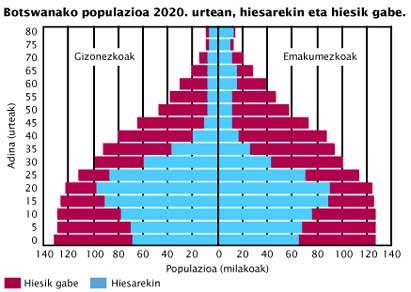
What to do? The question of generics
The adoption of appropriate measures has not prevented the increase of the pest. These measures must be global and local. Global, because they must be applied at the social and global level and because local people must adapt to local reality. In general, three are the universal principles to be applied against AIDS: one, the involvement of people living with AIDS in the response; two, prevention and care, and the synergy between them; three, overcoming the stigma of AIDS, one of the major actions.
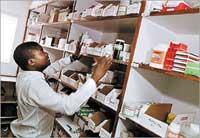
Certainly, the question of generics is right now from word to mouth. For an American, for example, AIDS treatment costs between 13,500-22,500 euros a year. The competitiveness between the pharmaceutical industry and generic companies has caused the price of medicines to decrease considerably, but the annual cost of treatment for each African patient is 2,000 euros. India's generic company Cipla and Hetero has offered medicines to Médecins Sans Frontières at a quarter price and at half price to governments and other institutions. They have not been the only ones. South Africa, Thailand and Brazil have also come off the path of generics.
The pharmaceutical industry has never seen with good eyes the question of selling drugs at a low price. On the one hand, because they fear doing business at their expense, because they see that countries that are going to receive low-priced medicines can start exporting medicines. On the other hand, AIDS is expected to start and requirements expand to other diseases. And surely they are not wrong. But public opinion opposes and several companies are willing to sell drugs at a low price. For example, Abbott, Boehringer-Ingelheim, Bristol Myers Squibb, GlaxoSmith Kline, F. Hoffmann-La Roche, Merck and Co Inc, and Pfizer have begun to collaborate with the United Nations.
Cheaper not enough
Although medications are lowered, most patients will not be able to cope with the costs of treatment. These words were written by AIDSETI President Binswanger in Science magazine. In his opinion, the issue cannot be limited only to pharmaceutical industries, but it is necessary to make special programs from developed countries, since for many it can be too expensive.
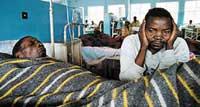
Expensive, because anti-AIDS treatment is not limited to taking the medication. Patients need to be monitored and that requires doctors, laboratories, material, etc. “It is regrettable, but even if they gave us enough medicines, we could not reach many sick people because there is no infrastructure,” warned one of the leaders of UNAIDS. In rural areas there is a lot of work to do. Construction of roads for the transport of medicines, construction of blood analysis laboratories, equipped with medical and nursing personnel. Many do not have enough clean water to help digest medicines to take with food or pills. But not only that, the first thing to do is attract people to perform a massive AIDS test.
The tragedy has uncovered sub-Saharan Africa, but the latest UN report has warned that Africa can be an example of what can happen in the future, especially in Asia. For more than a decade the incidence of AIDS has remained relatively low in all risk groups, but lately it is growing rapidly. China, Indonesia and Vietnam, for example, are suffering extraordinary plagues. In China in 1995, no HIV cases were detected among people taking drugs with syringes (8 sites were analyzed). In 1999, 17 of the 19 sites analyzed (80% of drug addicts had been contaminated in the city of Yining).
Without going any further, Eastern Europe has experienced the greatest growth in recent years. In January 1999 there were 10,000 cases of HIV in the Russian Federation. In 2000, 70,000. That is, only in 2000 were more cases detected than in the previous seven years.
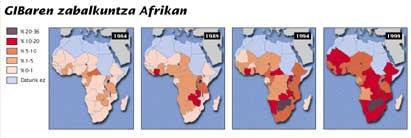
Botswana vs South Africa

These two Black African states are the most serious in the world. South Africa has 4.7 million people affected by the AIDS virus, 11% of the population. In Botwsana, 35% of the population has viruses, but they are much less, a million and a half. In South Africa, Thabo Mbeki is the president and has a very personal opinion on AIDS. He questions that HIV produces AIDS and does not want to see the serious situation in his country. In October he did his best not to have an AIDS report out.
But at the same time, it is taking steps to start producing generic drugs. In Botswana, President Festus Mogake launched a major education and prevention campaign when he came to government two years ago. They have infrastructure, hospitals, mobile units that will travel every two months to remote villages and training programs for doctors and nurses. They also announced that 300,000 patients will be treated by the end of the year.

Gai honi buruzko eduki gehiago
Elhuyarrek garatutako teknologia





